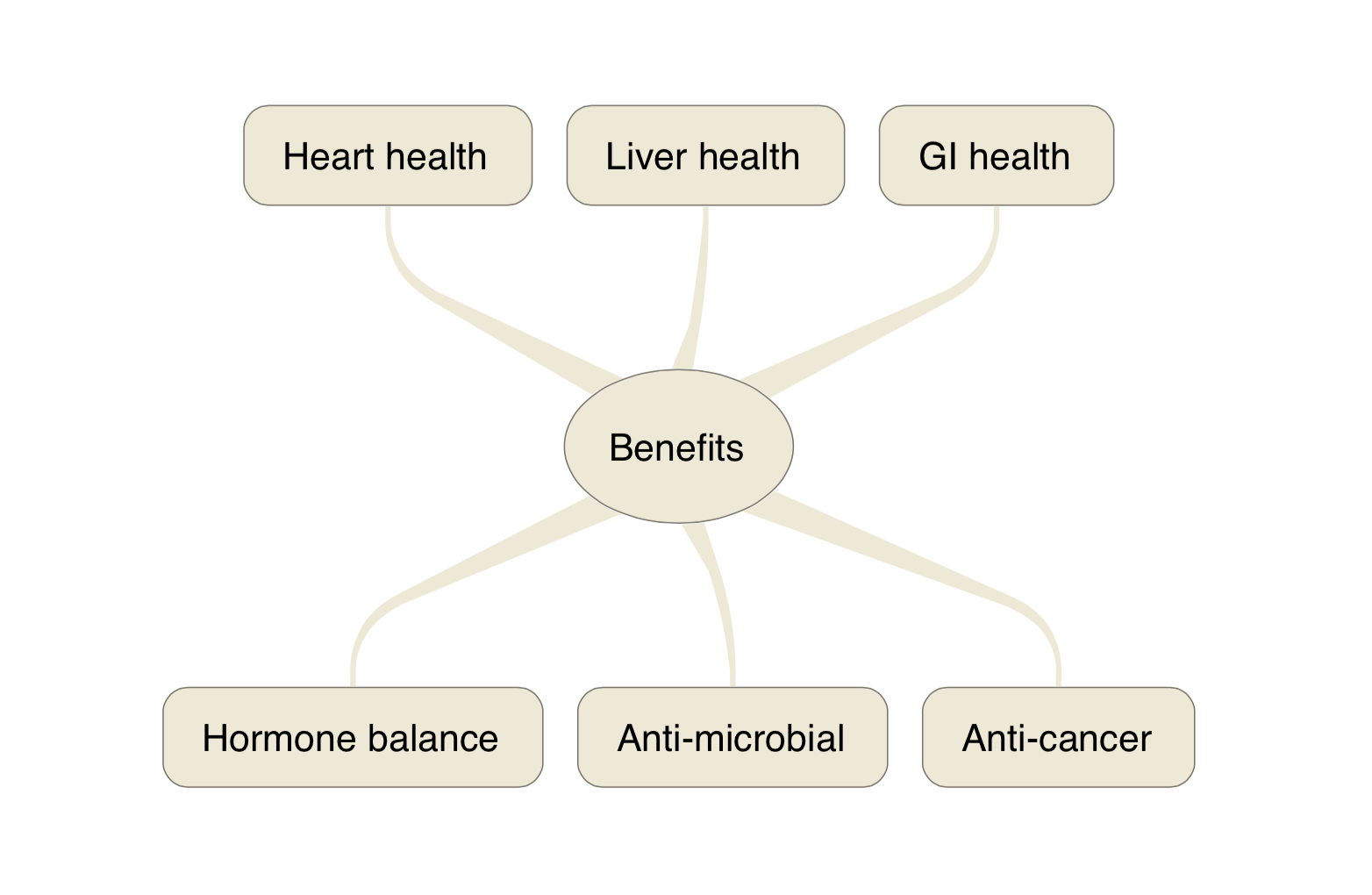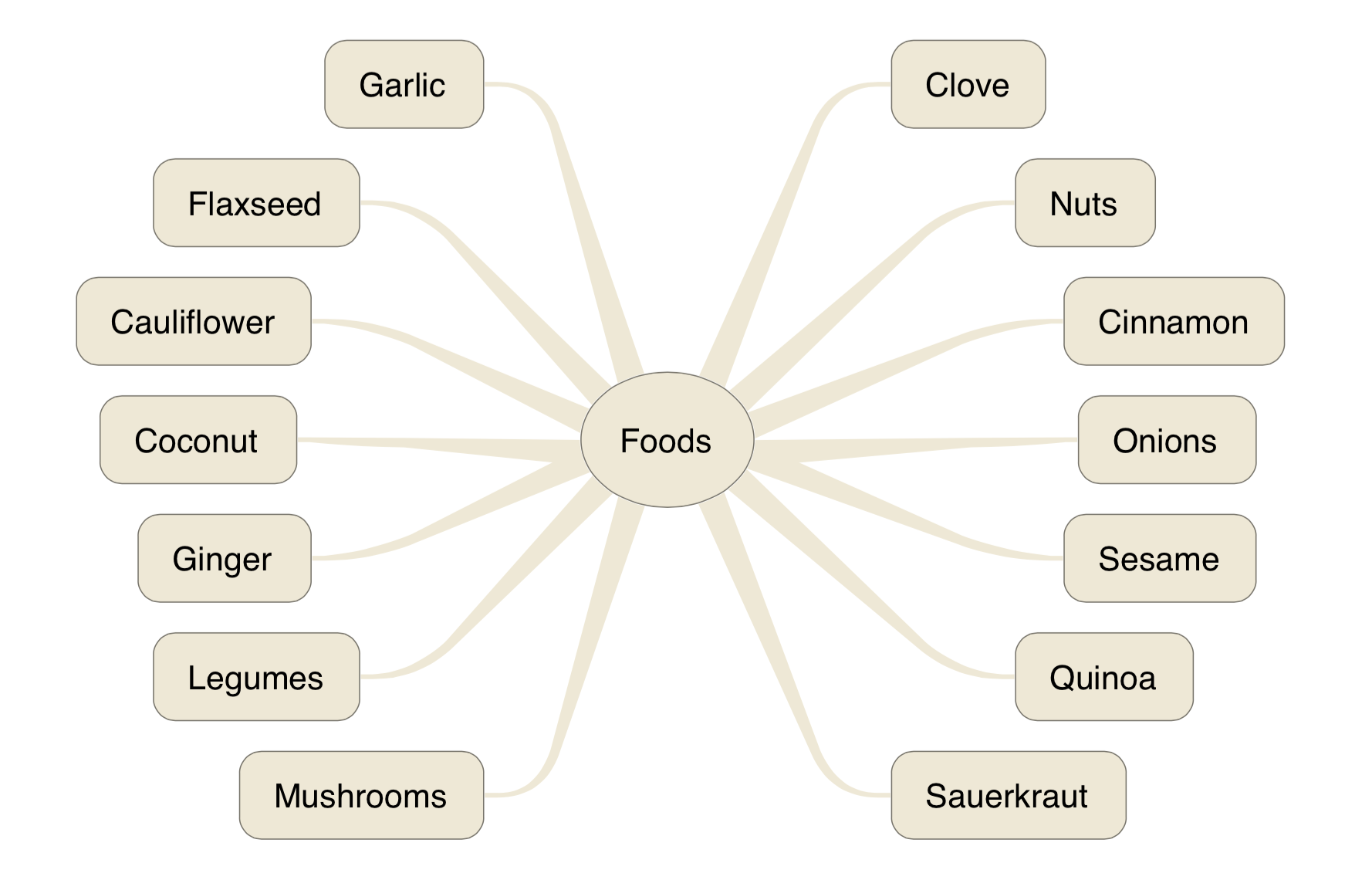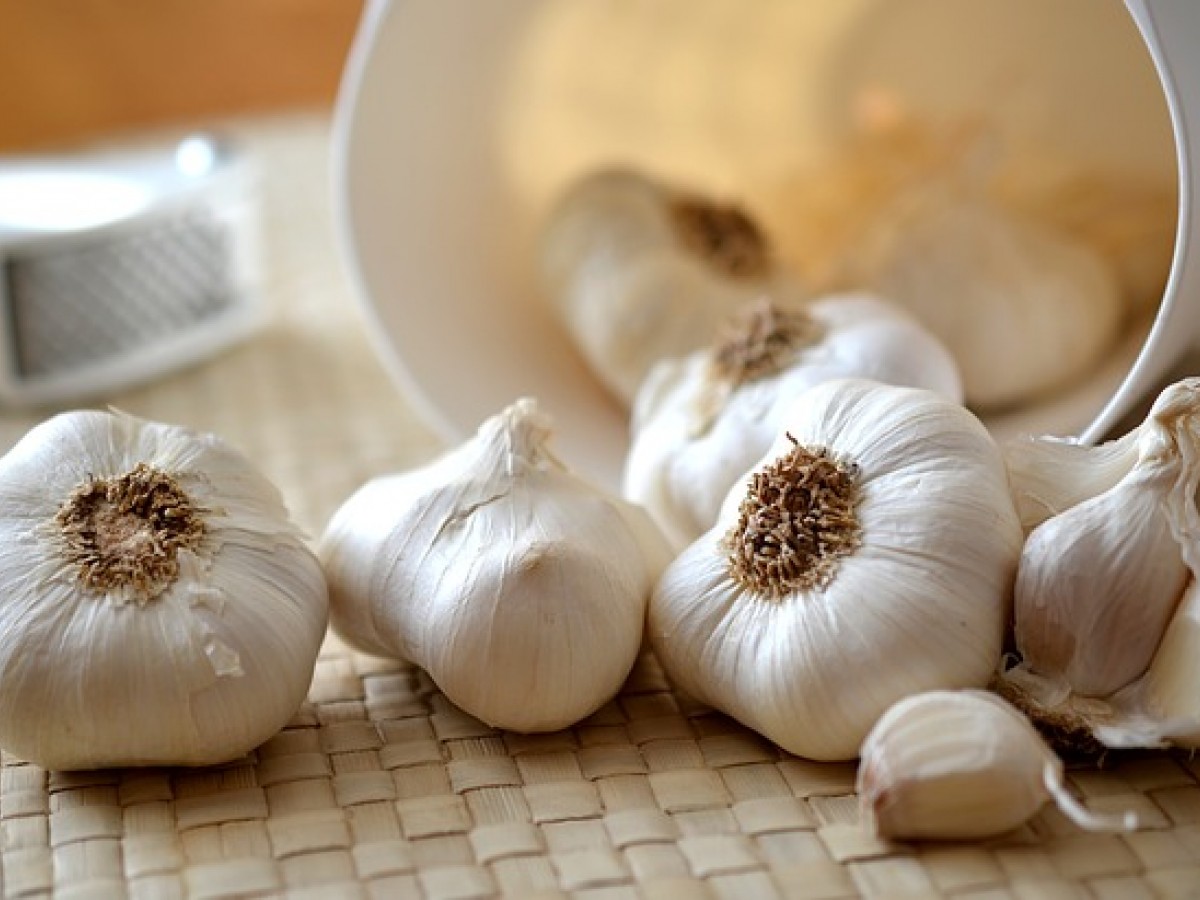How I Discovered the Power of White-Tan Foods.
So, I’m not exactly dreaming of a white-tan Christmas (unless the dream is of me being white and getting tan somewhere south of the border). But I do catch myself daydreaming about some of the delicious white-tan foods that live in my fridge and pantry. (No, not bread and pasta. Sorry.)
The so called "beige diet" of bread, pasta, beer, and sugar is a great way to get overfed and undernourished in a hurry. (This includes gluten-free substitutes). These are not the foods I want to talk about. Prepared foods like these are uniquely fattening because of the way they harass your hormones—insulin and cortisol. And they aren’t anywhere near as nutrient dense as their earthy origins would imply (whole wheat flour loses up to half its vitamins within 24 hours of milling).
As a choosy omnivore then, I’m always looking for a better beige: like nuts, seeds, garlic, and ancient grains that are actually whole—as in, you can count the grains.
I wasn’t always a choosy omnivore. I was forced into it. Some years ago I went gluten-free in hopes of improving my gut health. It helped. But at the time there weren't any gluten-free processed foods available, so I was forced to look at whole, nutrient-dense foods instead. This has served me well. I feel sorry for folks who are going gluten-free these days. They are likely to just get tricked into swapping one processed carbohydrate for another. (For more on this topic, read my post Carbohydrates: The Good, The Bad, and The Ugly.)
So. In the end, it was both my personal search for human flourishing and sheer necessity that lead me into the marvels of properly prepared, nutrient-dense, whole food. And in this case, it turned out to be food I might have overlooked because of its drab color.
The 2nd-Most-Wanted Nutrient
86% of Americans fall short in their consumption of white-tan phytonutrients, a fact that puts these compounds in the second-most-wanted position on the American table. (First position goes to Purple, which is under appreciated by at least 88% of us.)
The white-tan world of phytonutrients is vast. So for the sake of brevity, I’m going to focus mostly on two superstars: lignan and allicin.

Lignans:
If you’re a man, this may get your attention: Lignans boost testosterone. A game-changer that adds new meaning to the term “plant-strong”.
How so?
Men make estrogen from testosterone. (I know, surprise.) This requires an enzyme called aromatase. Lignans and many other plant compounds inhibit this enzyme. A few tablespoons of flax meal a day may be enough to inhibit your aromatase and slow down the conversion of testosterone to estrogen. That would leave more of your capital T around for...well, whatever you might want it for. Many natural bodybuilding supplements take advantage of this very principle and they charge you big bucks for it. So what I would say to men over 40, who are feeling a bit down, down under, is that you could take an expensive supplement, or you could try eating more whole food lignans and getting more exercise, sleep, and zinc. And then see what happens to your T.
Lignans work for women too, but with slightly different health benefits. Using whole foods to inhibit aromatase might be the best natural way for women to reduce their risk of estrogen-sensitive breast cancer—by reducing its fuel: excess estrogen.
If you're ready to get started, the best sources of lignans are flax seeds and sesame seeds. Not bad.
A last word about flax: I recommend grinding your own flax meal fresh from whole flax seeds. The omega 3 fatty acids in flax seeds are unstable when exposed to air. They will oxidize, or go rancid, quickly. I use a magic bullet at home to turn these seeds into a rich, loamy flax-meal in seconds. It has a neutral taste when fresh and blends well in smoothies. I would recommend grinding no more than 3 or 4 days worth at a time. Store it in the fridge.
Allicin:
Allicin is the phytonutrient that appears to be responsible for garlic’s many astounding benefits: anti-cancer, anti-bacterial, anti-viral, anti-clotting and perhaps anti-hypertensive. An Allicin Wonderland drug if you ask me.
But here's the deal: you must crush garlic first and let it sit for at least 5 minutes BEFORE cooking, in order to get these benefits. Waiting for 10 minutes is even better.
Why?
Because Allicin isn't really in garlic. It's the by-product of a chemical reaction that happens when two other chemicals in garlic, Alliin and Alliinase, combine. These starter molecules are stored in separate compartments within the garlic bulb. They don't mix until the plant is crushed.
What's more, Alliinase is a very heat sensitive enzyme; it literally has a melt down if you cook it. So patience is a real virtue here. Jumping the gun and nuking your garlic in the microwave for only 30 seconds destroys 90% of its anti-cancer benefits (according to one Israeli study). You may not be able to taste the difference, but your body will certainly feel it.
So here's what I do: I take the flat of a chef's knife and crush my garlic cloves first thing. I then leave them on the cutting board and go heat up my sauce pan, allowing time for the stainless steel to breathe and expand so it can accept the oil and allowing still more time for the oil to steep, until it reaches that perfect energetic shimmer. Then I toss in the garlic. That takes about 5-8 minutes. Long enough.
The Benefits Package
The general benefits of white-tan whole foods and the specific benefits of lignans and allicin go on and on. We are likely to keep discovering more amazing things about them every year as research continues. So I don't even begin to consider this list exhaustive:
- Anti-cancer
- Anti-inflammatory
- Anti-microbial
- Liver health
- Hormonal health
- GI health
Dr. Hyman says it best: "Food isn't like medicine; Food is medicine."

The Other White
So here's a sample of the white-tan wonders I eat most often. Feel free to use them as a jumping off point in your own quest to bring more goodness into your life:
Fruit. There are a number of white-tan fruits, like dates and lychee nuts and pears, but I prefer coconut for its low-glycemic load and fantastic fats (medium chain triglycerides).
- Coconut
Veggies. Cruciferous veggies and Alliums are both rich in sulfur, which is why they stink so good and combat cardiovascular disease, cancer, and inflammatory diseases.
- Cruciferous - cauliflower, sauerkraut
- Alliums - garlic, onion, shallots.
Mushrooms. Mushrooms have many medicinal benefits that we have not even attempted to cover here, particularly immune benefits. My fungus favs are:
- Portobello
- Shiitake
- Chanterelles.
Whole grains, legumes, nuts & seeds. Some of my gluten-free favorites include:
- Quinoa
- Buckwheat
- Black Rice
- Brown Rice
- Wild Rice (especially wild rice!)
- Lentils
- Brazil nuts (high in selenium)
- Sesame seeds and Tahini
- Flax seeds and Flax Meal.
Spices. Oh yes! "Tis the season". Check it out. Here's a license to live a little:
- Cinnamon
- Cloves
- Allspice
Food isn't like medicine; Food is Medicine. --Dr. Hyman.

Recipe: Roasted Cauliflower with Tahini Curry Crust.
photo by liz west

I'm a huge fan of Bob and Lenore's Online Cookbook. My wife and I have enjoyed their dinner show in Cannon Beach, Oregon many times. Last year Bob whipped up this cauliflower dish for us—and wow. We've been making it at home ever since.
You can follow the recipe exactly as written, or you can do what I do: amplify the white-tan factor by substituting Tahini and fresh lemon juice for yogurt (I don't do much dairy). Either way, it's awesome.
This dish is so incredibly easy and original, you'll whack yourself in the forehead for not thinking of it first. And it's a real beige beauty when it comes out of the oven. Guests will oooh and aaah as you bring it to the table and slice it up like a big fluffy pie.
Enjoy. And Happy Holidays!!
Yours in Health and Resilience,
Marc Wagner Nutritional Therapist, MD.
What to Read Next:
- The Dark Past of Carrots. Carrots weren’t always orange. They used to be purple (and better for your brain). True story.
Now it's your turn. What's been your experience with white-tan foods?
Tell me your frustations, aspirations, hacks, and recipes in the comment section!
